#pearl harbor navy yard
Text

View of the forecastle of USS NEVADA (BB-36), showing bomb damage forward of No. 1 turret.
Photographed on January 15, 1942.
Digital Archives of Hawai'i: PPFUR-2-17-005
#USS NEVADA (BB-36)#USS NEVADA#Nevada Class#Dreadnought#Battleship#Warship#Ship#United States Navy#U.S. Navy#US Navy#USN#Navy#Pearl Harbor Navy Yard#Pearl Harbor#Hawaii#World War II#World War 2#WWII#WW2#WWII History#History#Military History#January#1942#my post
91 notes
·
View notes
Text

On the morning of July 26, USS HORNET (CVS-11) arrived at Pearl Harbor, Hawaii. Sailors brought Columbia onto the flight deck so the assembled crowd of about 2,500 well-wishers could see it as the ship docked.

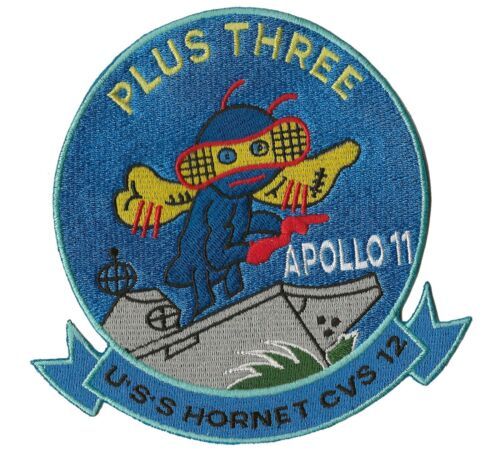
"After the astronauts departed HORNET in Pearl Harbor, workers used a crane to lift Columbia from the carrier’s flight deck to the dock and towed it to an aircraft hangar on Ford Island, the remote location chosen because the spacecraft still contained some toxic propellants that workers drained to safe the vehicle. To preserve back-contamination protocols, Columbia’s hatch remained sealed since the flexible tunnel connecting it to the MQF was removed. On July 29, workers loaded Columbia and the backup MQF onto a C-133 Cargomaster aircraft at Hickam AFB. After a refueling stop on the West Coast, Columbia arrived at Ellington on July 31 and workers trucked it to the LRL, where it was towed inside the spacecraft room. The Apollo 11 astronauts retrieved personal items from the spacecraft and [NASA recovery engineer John K.] Hirasaki removed the spacesuits for postflight inspections.”
Date: July 26, 1969
Mike Acs's Collection: link
#Apollo 11#Apollo CSM Block II#CSM-107#Columbia#NASA#Apollo Program#G-type mission#Recovery#USS HORNET (CV-12)#USS HORNET#Essex Class#Aircraft Carrier#Pacific Ocean#1969#United States Navy#US#Navy#USN#Pearl Harbor Navy Yard#Pearl Harbor#Hawaii#July#my post
73 notes
·
View notes
Photo


Cuirassé USS North Carolina (BB-55) – Arsenal de Pearl Harbor – Hawaï – Etats-Unis – 16 novembre 1942
©National Records and Administration - 512915
#WWII#Guerre du Pacifique#Pacific War#Marine américaine#US Navy#USN#Marine militaire#Military navy#Navire de guerre#Warship#Cuirassé#Battleship#Classe North Carolina#North Carolina class#USS North Carolina (BB-55)#USS North Carolina#BB-55#Showboat#Arsenal de Pearl Harbor#Pearl Harbor Navy yard#Pearl Harbor#Hawaï#Hawaii#Etats-Unis#United States of America#USA#16/11/1942#11/1942#1942
11 notes
·
View notes
Photo

USS Maryland (BB-46) in Pearl Harbor Navy Yard showing torpedo damage she sustained during the Battle of Saipan on 10 July 1944.
83 notes
·
View notes
Text

Mare Island Submarine
Photograph showing the conning tower of a World War II submarine as her periscope appears to cleave the sky above. Over 500 ships were built during the 142 years Mare Island Naval Shipyard served the Nation. Those ships ranged from wooden hulled sidewheeler gunboats to a massive battleship, but it was because of the shipyard’s expertise with the complexities of submarine construction that it became known as a submarine yard in later years. All but one of the Mare Island built ships have fallen victim to scrappers torches or they lie on the ocean bottom, victims of the sea or enemy action. The USS Silversides (SS-236) is the lone surviving ship. She is a museum ship in, of all places, Muskegon Michigan. She is a Gato Class fleet-type submarine built at Mare Island just prior to the outbreak of World War II. She was christened by Mrs. James J. Hogan, wife of Dr. Hogan, Vallejo's civilian representative in Washington, and founder of Council No. l, Navy League, in Vallejo. Dr. Hogan was convinced that Mare Island was Vallejo's lifeblood, and he was one of its most effective champions until his death in 1942. Silversides was launched on August 26, 1941, and she was commissioned one week after the Japanese attack on Pearl Harbor. Silversides departed on her first war patrol on April 30, 1942, for which she was credited with sinking four ships and damaging one. She went on to establish one of the top submarine combat records in the Pacific. Her record reflected more war patrols than all but 5 submarines, while sinking the third greatest number of ships (23), totaling 145,400 tons. During these patrols, the quality of her construction allowed her to escape undamaged following seventeen counterattacks by the Japanese where a total of 163 depth charges were dropped. Following the war, Silversides was towed up the Mississippi River with her superstructure removed to permit passing under bridges. She then became the submarine training ship at Great Lakes Training Station where she continued to serve until 1969. She has been on display at the USS Silversides Submarine Museum in Muskegon, Michigan since 1987.
#mare island#naval history#san francisco bay#us navy#vallejo#Silversides#Submarine#world war 2#world war ii#world war two
7 notes
·
View notes
Photo

The cost of not being diligent.
Here’s a look at Pearl Harbor on December 7, 1941, America’s Day of Infamy, by the numbers.
The United States
The most devastating of figures breaks down just how many people were lost during the Japanese attack. While the Navy suffered the brunt of the assault, there were other military personnel—as well as civilians—lost in the attack.
The following is a breakdown of the casualties.
In total, the US Navy suffered a loss of 2,008 sailors on the morning of the attack. Of that staggering figure, 1,177 sailors were killed during the attack on the USS Arizona and 429 were killed aboard the USS Oklahoma. 710 sailors were also wounded in the attack.
Army Air Corps
The airbases scattered around Oahu were vital targets for the attackers to guarantee no counterattack could be launched. With attacks on Hickam, Wheeler, and Bellows Fields, 218 Army Air Force members were killed. Another 364 were wounded during the attack.
Marines
With a smaller presence at Pearl Harbor, the Marines lost 109 of its men and suffered another 69 injuries.
Civilians
While the number is relatively low, the 68 civilians killed and 35 injured were a heavy loss. The target of the attack was a military installation, but Honolulu and the military housing weren’t too far from Pearl Harbor and the airbases to escape damage.
The Battleships
A total of eight battleships were moored at Battleship Row on the morning of December 7, 1941. Of them, two would never rejoin the war: the USS Arizona, which still sits in Pearl Harbor, and the USS Oklahoma, which was lost in transit to a California scrap yard.
The Aircraft
The Army Air Corps and the Navy suffered a combined loss of 188 aircraft, and another 159 were damaged.
The Japanese
The instigators of the attack, Japan suffered very few losses.
Over the course of the two-hour attack, Japan lost approximately 45 aircraft, four midget submarines, and about 131 men manning these craft.
https://pearlharbor.org/pearl-harbor-numbers/
52 notes
·
View notes
Photo
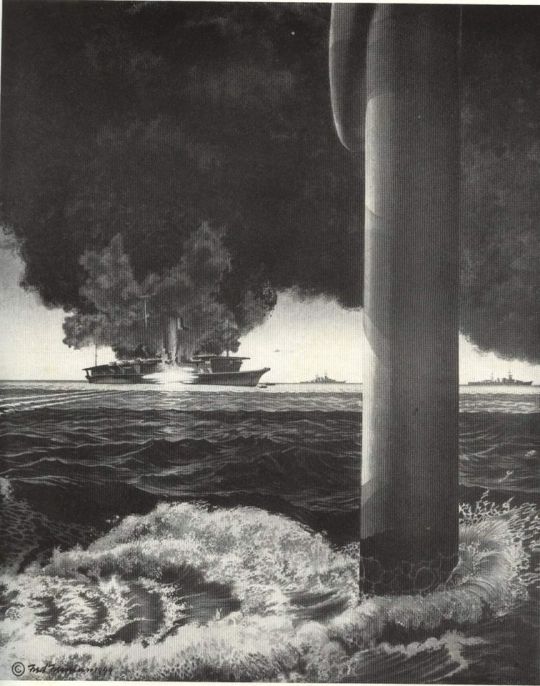
In May 1942, the submarine USS Nautilus (SS 168), under the command of Lt. Cmdr. William Brockman Jr., departed Pearl Harbor, Hawaii, for her first war patrol. Her mission was to search for the Japanese fleet sailing for Midway, and she succeeded.
USS Nautilus assisted in leading U.S. aircraft directly to the Japanese carrier Hiryu and harassing the enemy while our aircraft ravaged the Japanese Fleet. USS Nautilus survived 42 depth charges, several of her torpedoes failed to detonate, and Japanese aircraft and ships spotted her multiple times, forcing Nautilus to dive and evade multiple times. Yet, despite these challenges, the crew’s efforts were critical to the success of the battle and resulted in Brockman receiving the Navy Cross for the Battle of Midway.
She departed San Francisco, California, on 21 April 1942, reaching Pearl Harbor on 28 April. On 24 May, Nautilus (commanded by Lieutenant Commander William H. Brockman Jr.) got underway for her first war patrol, to Midway Island to help repel the expected attack by the Japanese fleet.
At 07:55, 4 June, while approaching the northern boundary of her patrol area near Midway Island, she sighted masts on the horizon. Japanese planes sighted the submarine at the same time and began strafing. After diving to 100 feet (30 m), she continued observation. At 08:00, a formation of four enemy ships was sighted: the battleship Kirishima, the cruiser Nagara, and two destroyers (misidentified, as they often were early in the war, as cruisers) in company. Within minutes the submarine was again sighted from the air and was bombed. Two of the "cruisers" closed for a kill and nine depth charges were dropped at a distance of about 1,000 yards (910 m).
When the attack ceased, Nautilus rose to periscope depth. Ships surrounded her. Sighting on Kirishima, she fired two bow tubes; one misfired, one missed. At 08:30, a destroyer immediately headed for the boat, which dived to 150 feet (46 m) to wait out the depth charge attack. At 08:46, periscope depth was again ordered. The cruiser and two of the destroyers were now out of range; echo ranging by the third appeared too accurate for comfort. At 09:00, the periscope was raised again and an aircraft carrier was sighted. Nautilus changed course to close for an attack. The enemy destroyer followed suit and at 09:18 attacked with six depth charges.
By 09:55 echo ranging ceased and Nautilus raised her periscope. The carrier, her escorts, and the attacking destroyer had disappeared. (Unbeknownst to her skipper at the time, the counter-attacking Japanese destroyer Arashi, in her rush to rejoin the carrier, was tracked by Enterprise's VB-6, led by Wade McClusky, back to the Japanese task force.) At 12:53, a damaged aircraft carrier with two escorts was sighted. The carrier was identified as Sōryū, but later research suggests it was probably Kaga. An hour later, Nautilus had moved into attack position.
Between 13:59 and 14:05, after the battle was largely over, Nautilus launched four torpedoes at the carrier from less than 3,000 yards (2,700 m). One failed to run, two ran erratically, and the fourth was a dud (a familiar problem for the Mark XIV), impacting amidships and breaking in half.[18] Nautilus reported flames appeared along the length of the ship as the first hit, and the skeleton crew which had been aboard (survivors of which reported no torpedo hit) began going over the side, with the air flask of the dud torpedo acting as a life preserver for Japanese sailors.
Nautilus went to 300 feet (91 m) as a prolonged depth charge attack commenced. At 16:10, the submarine rose to periscope depth. The carrier, burning along her entire length, had been abandoned. At 19:41, Nautilus resumed her patrol, having expended five torpedoes and survived 42 depth charges, but accomplished little of substance. (Not until much later was the importance of her attack on the battleship, and its connection to McClusky, recognized.) Her commanding officer was awarded a Navy Cross for his actions.
Between 7 June and 9 June, Nautilus replenished at Midway Island and then resumed her patrol to the west. By 20 June, she was operating off Honshū at the northern end of the Tokyo-Marshall Islands supply route. On 22 June, she damaged a destroyer guarding the entrance to the Sagami Sea off Ōshima. Three days later, she sank the destroyer Yamakaze and damaged an oil tanker. On 27 June, she sent a sampan to the bottom and on 28 June, after damaging a merchantman, underwent her severest depth charging, which forced her back to Pearl Harbor for repairs, 11 July to 7 August.
U.S. submarines would go on to take the fight to the Japanese across the Pacific, wreaking havoc on the critical maritime supply routes that supported their industry, and ravaging their warships. Although submarines only made up only 2% of our entire Navy during WWII, they sank 30% of Japanese warships and 55% of Japanese merchant ships.
But this wartime effort was not without significant sacrifice. The U.S. submarine force experienced some of the highest casualty rates of any force in WWII. A foundational part of our training as submariners is the study of this legacy of sacrifice and commitment in the face of the enemy. In this training, we make it a point to ensure that today’s submariners recognize that even though we eventually achieved victory, we were not ready for unrestricted submarine warfare when we entered the fight after the attack on Pearl Harbor.
Our weapons were erratic, our tactics unrefined, and our training inadequate to the task. Yes, we eventually overcame each of these obstacles to halt the Japanese advance and set the conditions for victory in the Pacific, but there is no guarantee that the pace of future combat operations will forgive such a lack of foresight and preparation. We have to be ready to deploy and sustain high-end combat operations with little or no warning – and today we exercise that every single day in our Submarine Force.
Image caption: Drawing depicting the sinking of the IJN aircraft carrier Soryu at Midway, June 1942. In fact, the Nautilus (SS-168) fired torpedoes at the IJN aircraft carrier Kaga. One torpedo actually hit the ship. However, due to faulty design problems which plagued the Navy throughout the first 2 plus years of the war, the torpedo failed to explode, actually broke in half with the warhead plunging to the bottom and the back half serving as a life raft of sorts for Japanese survivors floating in the waters off Midway.
https://www.navy.mil/.../then-and-now-midway-and.../
https://en.wikipedia.org/wiki/USS_Nautilus_(SS-168)
https://www.navsource.org/archives/08/08168.htm
https://www.facebook.com/GotDolphins/
24 notes
·
View notes
Note
✂️ and choose between Canute and Harald
happy tds birthday!!💕
{sleepover saturday}
Omg I have to chose between them?
For starters: I think they make great scene partners. Canute has the advantage of having once BEEN the young man with a famous father and big expectations, and that's a role he navigates with ease when talking to Harald, Edmund, and Leif.
I know Harald has the eye candy thing going, but I have to say Canute.
✂️Cut scene: I had forgotten I wrote this - I found it when I was recording the other day. It's Annie Sutton introducing the Girl Gang to Nixon and Winters.
“We’ve been with our guys quite a few weeks now and we know them, more or less, and now we’ve got some new faces, new to us faces, and we...need to know them - how they’re going to fit in. And we were hoping you could...could tell us that.”
“Where’d you want me to start?”
“Alphabetically’s fine,” Winters offered, laying down his fork and removing a roster from his shirt pocket. Sutton almost snorted, and took the paper.
“Bryant, Judy - a West coast girl. Follower, not a leader. Comic in training. Blond, usually with Eileen. I think you know Eileen.” She glanced up, and both men nodded, Winters unruffled, Nixon a little red in the cheeks, as though he were being accused of something. “Fowler, June -”
“She’s the one with the limp, right?” Nixon asked, trying to place names with faces.
Annie nodded. “She’s got a riser in her boot now, you’ll notice that limp’s gone. Waited tables at a diner in Jersey - and mention that limp and she’ll hit you.” Nixon gave a sharp nod, and Annie returned to the list. “Gordon, Marjorie. Used to be a teacher - high school biology.”
“You can tell.”
Yes, you can, Annie agreed silently, though she wasn’t about to give Nixon the satisfaction of hearing her say it. “She’s a leader - a good candidate for sergeant, when you start looking. And she plays a great second base - ask her some time.” Both Winters and Nixon nodded, the Easy Company baseball team probably the furthest from their minds at the moment. “Griffiths, Julie -”
“Wait, Ju-lee? Not Ju-dee? June, Julie, Judy - all of these Js, how do you keep them straight?”
Annie looked up at Nixon. “Do you know any men named John, Lieutenant?”
He cleared his throat and looked chastened. “That’s fair.”
“Ju-lie,” Annie said, returning to the list. “An Englishwoman, you’ll have noticed the accent. Her father works for Marconi - she’s traveled quite a bit. A great candidate for radio school. Eileen you said you know…” She glanced up at Nixon and Winters, the former trying, again, not to look guilty and the latter only slightly less so. That’s what I thought. “Henderson, Irene.”
“The tall one,” Dick said, the first observation he’d made aloud, trying, perhaps, to make up for the fact that he knew Eileen on sight. “She doesn’t say much.”
Takes one to know one, Annie thought to herself. “She doesn’t have to. Not one of your book-learners, but she’s ...sensible. A good team player. Mahoney, Molly - sandy hair, sunburn? Studied archeology. Worked at the Met for a while in their conservation department. Bit of a bluestocking - absolute artist with an entrenching tool.”
“Yeah, what’s she doing here?”
“Her brother died at Pearl Harbor.” Neither man wanted to argue with that, and Annie returned to the list. “Mitchell, Billie - hair on the lighter side, dimples, middling height? Ran a rivet gun in the Navy Yard for a minute or so. If you’re looking for machine gunners or mortarmen, I’d take her, she’s strong and she’s got a good eye. Russo, Doris, dark hair, shorter side, Chicago girl, probably knows someone in the Outfit, if I’m being perfectly honest, she’s…”
Annie trailed off, trying to find words to describe the short but scrappy Italian, who had gotten into a screaming catfight the first week of camp and emerged victorious, spitting curses. “You already have Perconte and Guarnere, you know Doris. Schmidt, Connie - farm girl. Another good candidate for mortarman, if you need her, she’s strong and she’s tough. Ruth Shapiro - the redhead. Speaks Polish, that could be useful to you - oh, and she has an eidetic memory.”
Nixon looked confused. “Ee…”
“Eidetic, Lew, it means she remembers everything. Just your kind of girl.”
Did Dick Winters just make a joke? Annie glanced at the bottom of the list and passed it back to Winters. “And Joan Warren, of course, whom everyone also already seems to know. There they are. They don’t want your sympathy or your pity. They want to be where it’s hot so they can say that they could do it - just like you do.”
9 notes
·
View notes
Text
For Hunters Points, the Ship Has Sailed
In the first half of the twentieth century, San Francisco was the busiest port on the West Coast, and the Hunters Point Shipyard was its busiest repair facility. The yard opened commercially in 1867 with the construction of the West Coast’s first permanent dry dock. At the time, it was one of the world’s largest.
Within weeks of the 1941 attack on Pearl Harbor, the entire shipyard was seized by the navy, and during World War II the War Department transformed Hunters Point into a vital repair base. At its peak in 1945, it employed over 18,000 workers. During the postwar years, the Naval Radiological Defense Laboratory operated there, its major responsibility being the study and decontamination of ships used in the nuclear weapons tests at the Bikini atoll. The NRDL also built a cyclotron “atom smasher” at Hunters Point and conducted top secret research on the effects of radioactive fallout on humans and animals.
Between the shipshod documentation of the NRDL’s dirty playthings and other unknown contaminants from the day-to-day operations of a major shipyard, no one really knows the extent of the toxic mess left behind on the isolated south side of the base. The NRDL was shut down in 1969, and in 1974 the navy decommissioned the entire base. Most of the area has remained uninhabited and inhospitable ever since.
Stories of widespread radioactive and chemical contamination as well as its location beside one of the toughest, most crime-ridden neighborhoods in San Francisco have kept the once bustling five-hundred-acre shipyard out of the public eye for decades. The entire facility has been locked and off-limits to the public for over thirty years. After a series of phone calls to various local and federal agencies, Weird California was granted night photography access to the long-deserted yard.
Dozens of abandoned corrugated-metal warehouses and decrepit office buildings stand scattered around nameless potholed streets. Red brick dry rock pump houses, dating back to 1867, slowly decay in the fog-shrouded air. These are some of the oldest buildings in San Francisco, utterly forgotten. Giant gantry cranes loom over broken and flooded dry docks as an endless stream of airliners streak across the sky from the nearby San Francisco and Oakland airports.
Security is tight. The SFPD and Department of Defense police maintain a strong presence at the shipyard. Inside the fence, it’s quite safe, while just outside, gang warfare run rampant.
On the hill above the dockyard is a now empty residential neighborhood. Built in the early twentieth century, all eighty-six homes were seized by the navy for officers’ housing in 1942. When the base was decommissioned, the homes were abandoned. They have stood untouched for thirty years, slowly weathering, taking on the look of a postapocalyptic movie set. It’s spooky to wander down the middle of the desolate, debris-covered streets and hear car chases and gunfire just a few blocks away. The entire relic-strewn base is just minutes from the downtown of one of the West Coast’s largest cities. Most of San Francisco’s citizens have no idea of this place’s checkered past and toxic legacy. Many don’t know it even exists.
0 notes
Text
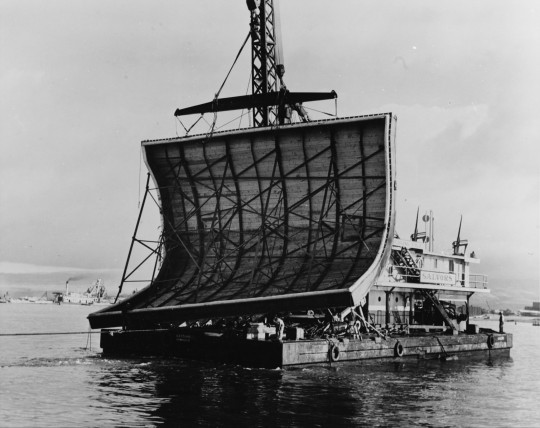


Workers lowering the patch into place on USS NEVADA (BB-36), in order to make her hull water tight enough to refloat her and tow her into a drydock for repairs.
Date: January 8, 1942
Admiral Furlong Collection
Naval History and Heritage Command: NH 45464, NH 45465
Digital Archives of Hawai'i: PPFUR-2-17-011
#USS Nevada (BB-36)#USS Nevada#Nevada Class#Dreadnought#Battleship#Warship#Ship#Pearl Harbor Navy Yard#Pearl Harbor#Hawaii#World War II#World War 2#WWII#WW2#WWII History#History#United States Navy#U.S. Navy#US Navy#USN#Navy#repairs#salvage#January#1942#my post
71 notes
·
View notes
Text
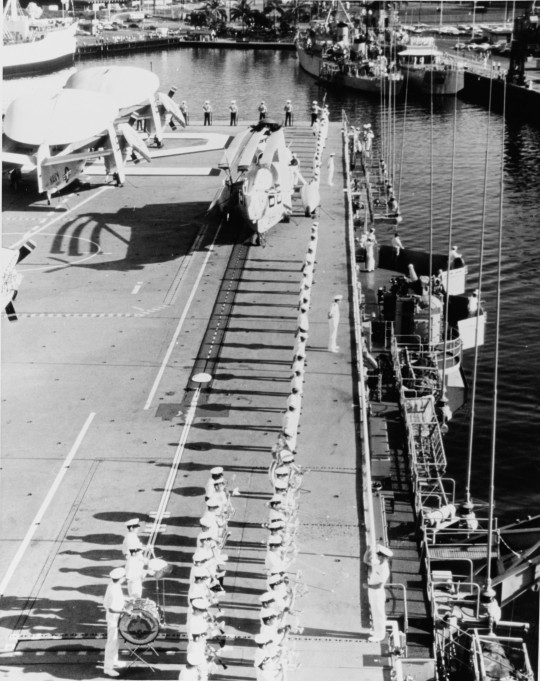
"Crewmen man the rail of USS HORNET (CVS-12), as the carrier arrives in port at Pearl Harbor, Hawaii with the Apollo 12 Command Module and three astronauts aboard."
Date: November 28, 1969
Naval History and Heritage Command: K-80892
#Apollo 12#NASA#Recovery#USS Hornet (CV-12)#USS Hornet#Essex Class#Aircraft Carrier#November#1969#Pearl Harbor Navy Yard#Pearl Harbor#Hawaii#Helicopter 66#Sikorsky SH-3 Sea King#SH-3#Helicopter#Helicopter Anti-Submarine Squadron Four#HS-4#my post
30 notes
·
View notes
Photo
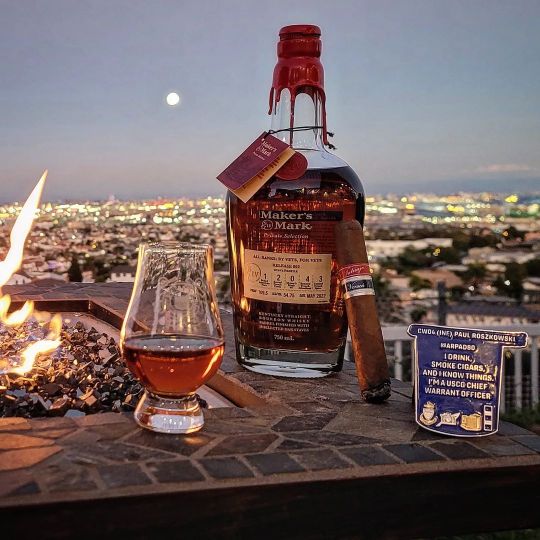
Sunset, full moon, Tatuaje Verocú cigar, and Maker's Mark All Ranks: By Vets, For Vets release 002 bourbon I can't think of a better way to end a busy day. This bottle has a long dry finish with notes of orange peel, leather, tobacco, coffee, and wood. .... On the morning of December 7, Honolulu Harbor was quiet as USCGC Taney lulled peacefully tied to pier 6. Nearby cutters Kukui, Reliance, and CG-8 sat at pier 4. At sea near Barbers Point cutter Tiger was on regular patrol when she intercepted a message from the USS Ward claiming they had fired on and destroyed a submarine attempting to gain access to Pearl Harbor. As the Japanese surprise attack on military airfields and the US Navy Pacific Fleet began Tiger took up her wartime station at the mouth of Pearl Harbor. CG-8 picked up the depot keeper from Sand Island as bombs exploded nearby and proceeded, under fire from enemy planes, to Kewalo Basin to prevent vessels from leaving before they were cleared by intelligence. As the 2nd wave of planes appeared Taney answered with her guns at extreme range, breaking up the formations. At Ford Island, USCG LT Frank Erickson, who would later pioneer helicopter flight, was standing watch when the attack began. He took command of the Ford Island Control Tower and its anti-aircraft battery to fight off enemy planes. The attack would leave the Pacific Fleet decimated and more than 2,400 military and civilians killed with and additional 1,178 wounded. .... "We had a grand stand view of the battle. We could see all of Ford Island and the Pearl Harbor area with the ships, the Navy Yard, Hickam, Wheeler and Eva Fields all of which were on fire. Practically all our combat planes were already lost on the ground. Most of the battleships moored along Ford Island were listing badly." - LT Frank Erickson, USCG ..... #pearlharbor #onthisday #thisdayinhistory #cigar #CigarLover #CigarAfficionado #cigarphoto #cigarsnob #cigarlife #cigarsmoke #tatuajecigars #cigarsandwhiskey #sailorandsticks #TapThatAsh #whiskey #makersmark #makersmarkambassador #byvetsforvets #whiskeylife #WhiskeyLover #whiskeyphoto #WhiskeyNeat #whiskyandhistory #whiskeywednesday #quote #quotestagram #history #uscg (at Coastal San Pedro) https://www.instagram.com/p/Cl47cQmrFB8/?igshid=NGJjMDIxMWI=
#pearlharbor#onthisday#thisdayinhistory#cigar#cigarlover#cigarafficionado#cigarphoto#cigarsnob#cigarlife#cigarsmoke#tatuajecigars#cigarsandwhiskey#sailorandsticks#tapthatash#whiskey#makersmark#makersmarkambassador#byvetsforvets#whiskeylife#whiskeylover#whiskeyphoto#whiskeyneat#whiskyandhistory#whiskeywednesday#quote#quotestagram#history#uscg
0 notes
Photo
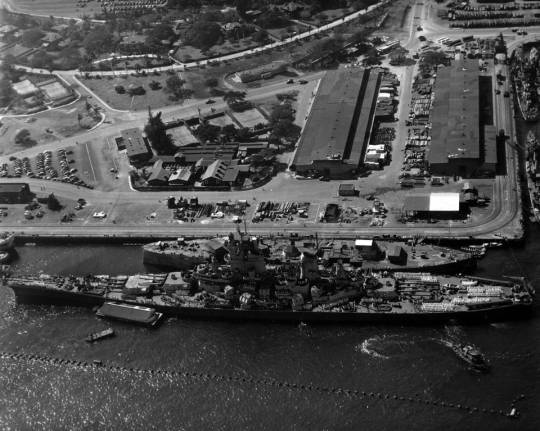
Iowa-class battleship USS Wisconsin (BB-64) is tied up outboard of the hulk of USS Oklahoma (BB-37), at the Pearl Harbor Navy Yard, Hawaii. 11 November 1944
69 notes
·
View notes
Text
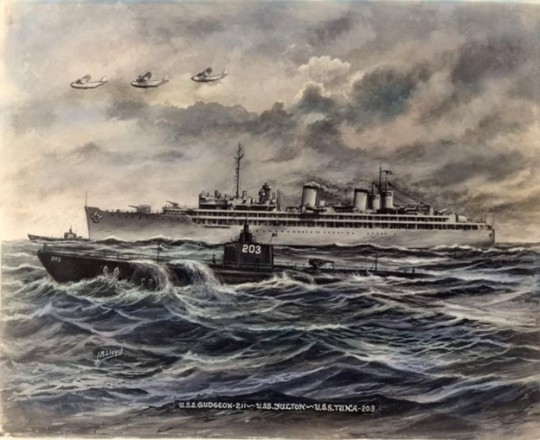
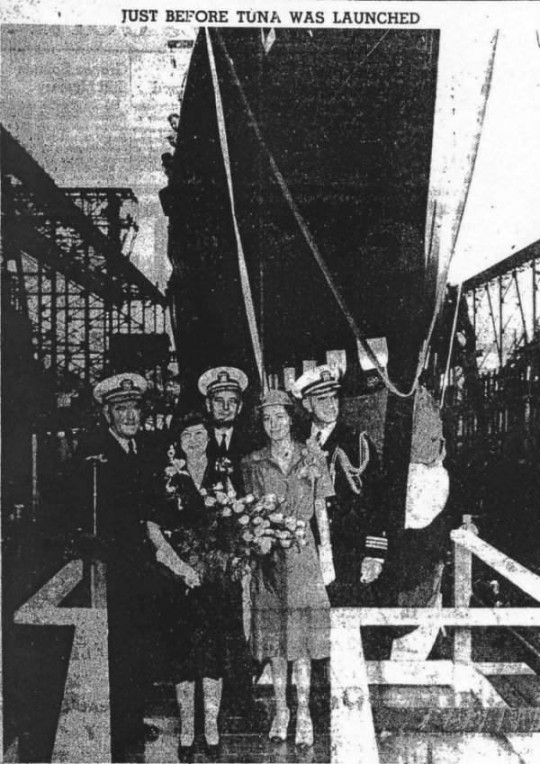
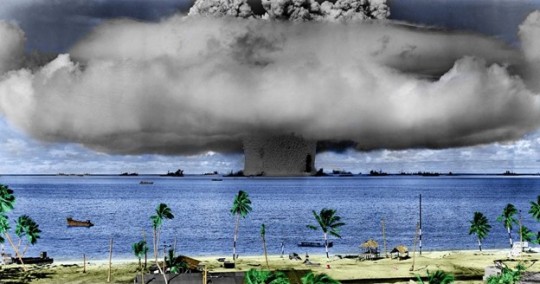
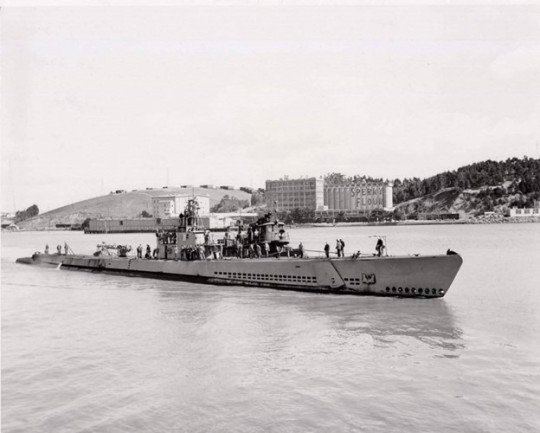
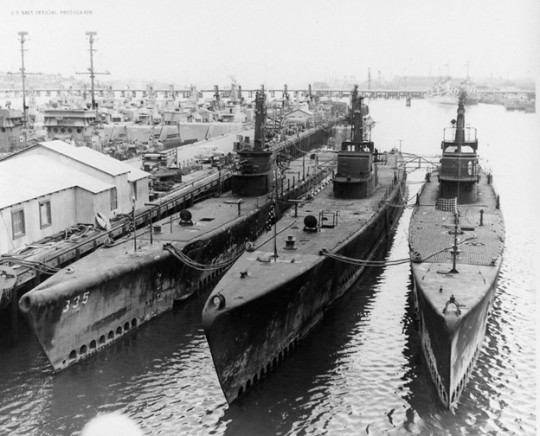
Unsinkable
the USS Tuna (SS-203) is an example of durability of a submarine built at Mare Island. The Japanese couldn’t sink her, friendly fire couldn’t, and nuclear weapons were not up to the task. In the end only the U.S. Navy could sink her when it was decided to scuttle her. USS Tuna was a United States Navy Tambor-class submarine launched at Mare Island on October 2 in 1940 as part of an arms build-up as the world grew ever more consumed by war. She served throughout the Pacific during World War II and earned seven battle stars. After the war, she was used as a test platform during the Bikini Atoll atomic bomb testing in 1946.
Tuna departed San Diego, California, on 19 May 1941 for Pearl Harbor and shakedown training. In one of those rare moments when adversity is twisted into opportunity the operations in Hawaiian waters revealed that the submarine's torpedo tubes were misaligned. This builder’s flaw took a positive turn when correcting the problem necessitated her returning to Mare Island for repairs. During the Japanese attack on Pearl Harbor on 7 December 1941, Tuna lay safely in drydock at Mare Island. Following repairs, she set out for Pearl Harbor an war patrols on 7 January 1942.
Tuna conducted 13 war patrols in the East China Sea, the Japanese home islands, the Aleutian Islands, the waters off the east coast of Vella LaVella; off New Ireland and Buka, and the Bismarck Archipelago, off Lyra Reef, on the northeast side of New Ireland. In mid-1943, as Tuna set out from Brisbane on her eighth patrol, a Royal Australian Air Force patrol bomber attacked her, dropping three bombs close aboard. The resultant damage necessitated 17 days of major repairs at Brisbane, delaying her departure for the eighth patrol. She then set off for the East Caroline Basin on the traffic lanes to Rabaul, and the Java Sea and Flores Sea before returning to Hunters Point Navy Yard in California, where she arrived on 6 April 1944 for a major overhaul. After refitting, she headed for the Palau Islands. Tuna roamed the sea lanes of the Japanese home islands, off Shikoku and Kyūshū. She then supported the invasion and liberation of the Philippines.
Tuna’s final war patrol began on 6 January as she left Saipan to take position off the west coast of Borneo. From 28 January to 30 January 1945, Tuna conducted a special mission, reconnoitering the northeast coast of Borneo. She did not attempt a landing due to enemy activity. From 2 March to 4 March, Tuna accomplished her second special mission of the patrol, landing personnel and 4400 pounds of stores near Labuk Bay.
Following the war Tuna was selected as a target vessel for the upcoming atomic bomb tests at Bikini Atoll in the Marshall Islands. Tuna was assigned a place among the target vessels anchored in the atoll. The first atomic bomb was detonated on 1 July 1946, and the second followed 24 days later. Receiving only superficial damage, following the Atomic bomb test Tuna was decommissioned on 11 December 1946, she was retained as a radiological laboratory unit and subjected to numerous radiological and structural studies while remaining at Mare Island. She was then towed from Mare Island for the submarine's "last patrol." On 24 September 1948, Tuna was sunk in 1,160 fathoms (6,960 ft) of water off the West Coast and struck from the Naval Vessel Register on 21 October 1948.
#mare island#naval history#san francisco bay#us navy#vallejo#submarine#world war 2#world war ii#world war two#Tuna#Unsinkable#atomic bomb#Bikini#Scuttle
0 notes
Photo
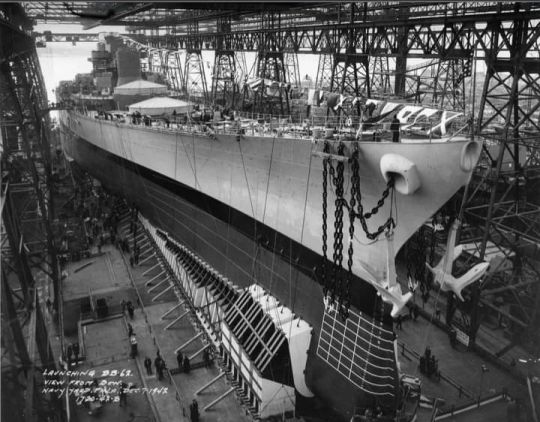
"A Day Of Honor In The Delaware River - The Launching Of The USS New Jersey." Eighty Years Ago Today (Monday) December 7th, 1942 - the Philadelphia Navy Yard, Philadelphia PA: On September 16th, 1940, we prepared for War. President Roosevelt signed the Selective Service Act, and activated nearly 30 National Guard Regiments and Divisions. That very same day, 125 miles away, the keel was being laid for what would become America's most famous and decorated warship - the Iowa-Class USS New Jersey (BB-62). Now, a smidge over two years and two months later, she is ready for launching. A war had broken out around her unfinished hull a year earlier; all speed was poured into her completion for launching. Now, one year to the day after the attack on Pearl Harbor, thousands of people watch from both sides of the river as the Navy’s newest warrior prepares to touch salt water for the very first time. Mrs. Carolyn Edison, wife of Governor Charles Edison, and former Secretary Of The Navy, smashes the bottle of champagne on her bow (Photos 5 and 6). The mighty Battleship slides down the ways, and into the Delaware, taking her first steps into history and naval legend. Tug boats come along side, and shepherd her to the "fitting out" dock, where she will be completed top to bottom, including having her superstructure, support equipment, turrets, and mighty 16-inch guns added. Folks, please look closely at these photos, and see the size perspective of just how absurdly massive the ship is compared to the near ant-sized people around her. The Iowa-Class are absolute monsters, both in scale and firepower. And soon, they'll be taking that firepower into Harm's Way. 80 Years Ago, Today... ** 🇺🇲🇺🇲 🇺🇲🇺🇲 ** Please Like & Follow "Sandy Hook History" on Facebook & Instagram for more amazing maritime and military histories of the Garden State and New York Harbor as well as a review of the 80th Anniversary of the Battle Of The Atlantic and World War 2** 🇺🇲🇺🇲 (at Fort Hancock, New Jersey) https://www.instagram.com/p/Cl4oLlignFD/?igshid=NGJjMDIxMWI=
0 notes
Photo
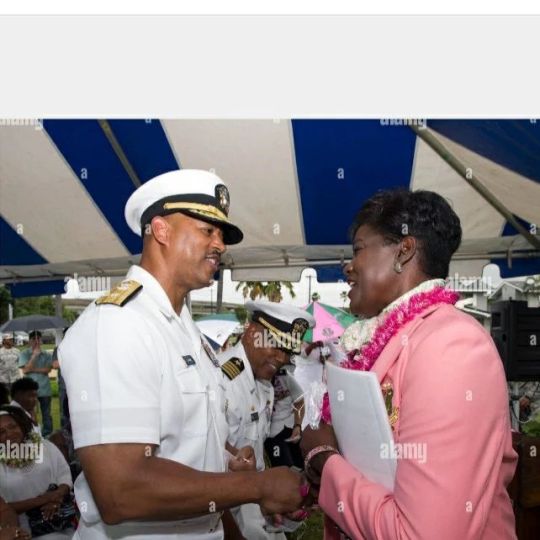
Alpha Kappa Alpha Sorority hosted the rededication of the plaque that sits on a grassy yard on a corner of a residential housing unit. The event on a drizzly afternoon included a Hawaiian blessing, a hula dance and a historical reading. "As we contemplate Dorie Miller's bravery on Dec. 7, 1941, and his sacrifice for our freedom, let's consider the gift he and other World War II veterans, sailors, soldiers, airmen, Coast Guard and Marines gave us," Fuller said. Navy Mess Attendant 2nd Class Doris "Dorie" Miller, the first African-American to receive the Navy Cross, was celebrated for his heroism during the Pearl Harbor attack and his service to the nation. Retired Navy Chief Petty Officer Carl Clark, 100, a World War II veteran who was stationed at Kaneohe Bay, Hawaii, said he became friends with Miller because all the black mess attendants hung out together. "It's beautiful to be here and see all these beautiful people honoring my friend, Dorie Miller," Clark said. He described Miller as a "beautiful young man" who was the kind of guy who "took a lot of chances, you could always see that in him," as exemplified in his actions on Dec. 7, 1941. #AKA1908 #MemorialDay #D9Military #MilitaryGreeks https://www.instagram.com/p/CeHDXo_L1Mv/?igshid=NGJjMDIxMWI=
0 notes